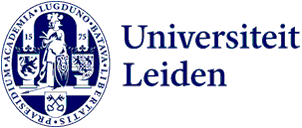
Give peace a chance: the way conflict can be eased, according to social psychology
How to reduce aggression when two parties are at odds? PhD research by psychologist Lennart Reddmann shows that it can help to offer them a peaceful alternative. However, the attacking party benefits the most from such a solution.
After years of research into conflict and cooperation, the newly promoted Lennart Reddmann knows: people don’t fight each other just for fun. 'Experimental research shows that, for the most part, parties attack each other under specific circumstances. When they are in an environment where resources are scarce, and attacking the other is the only way to make gain or profit.' But prolonged conflict, or even war, is destructive. Not only is it stressful, but parties involved invest money, resources, and energy that they most likely won’t get back. 'Therefore,' Reddmann explains, 'I wanted to explore whether a peaceful alternative would help reduce aggression among conflicting parties.'
Asymmetric conflict
He and his colleagues investigated this in economic experiments, where they sent participants into an asymmetric conflict. Asymmetric means that a distinction was made between an attacking and a defending party. 'We had participants play out a conflict against each other online and in the lab. In the lab, although they were in the same room, the participants each sat at a computer and did not see each other.' Both sides were given a real amount of money, and one side was then given the option of attacking the other side, investing a sum of money in the process. The other party then had to defend itself by also putting in an amount of money; whoever put in more money than his opponent won the conflict. 'We worked with real money, so there was actually something at stake for the participants.’
Peaceful way out
Then, in several experiments, the researchers offered a peaceful solution to the participants. 'One example is a small concession, or appeasement: the defender contributes a small amount of money to satisfy the attacker. Or we gave both sides the opportunity to, instead of investing in deconstructive conflict, make a profit by investing in an external resource.' What turned out: these peaceful alternatives made the conflict recede and both sides become less aggressive towards each other. 'Many people used the peaceful option and both sides benefited. However, we did see that the attacking party benefited relatively more from the peaceful alternative, because they were more flexible in how they spent their resources.'
War
The dynamics observed in the lab are also reflected in asymmetrical conflicts in the 'real' world. ‘Take, for example, the war in Ukraine. In this case, there is a clear aggressor, Russia, against which Ukraine must defend itself. As the attacking party, Russia has more flexibility than Ukraine, which is being invaded and must deploy all its money, resources, and manpower to defend itself. Meanwhile, Russia can keep its domestic economy running and aggressively launch attacks at the same time.’
(Un)equal
'But,' Reddmann adds right away, 'due to numerous factors, this war is many times more complex than the controlled setting in the lab. Still, this research does help better understand how the dynamics in a conflict work, and why, even if peaceful alternatives used, the attacking side may benefit most from it.' Is that a bad thing, if such a solution eventually help reduce conflict? Reddmann:'That is of course a value judgement, but I do think it would certainly be more beneficial if a conflict is ended, it is done in an equal way.’
On 23 January, Lennart Reddmann received his PhD for his thesis Peaceful Alternatives to Asymmetric Conflict. He is now working as a postdoc at the Max Planck Institute in Freiburg, where he will conduct research on the mechanisms behind conflict, exploitation and slavery.
